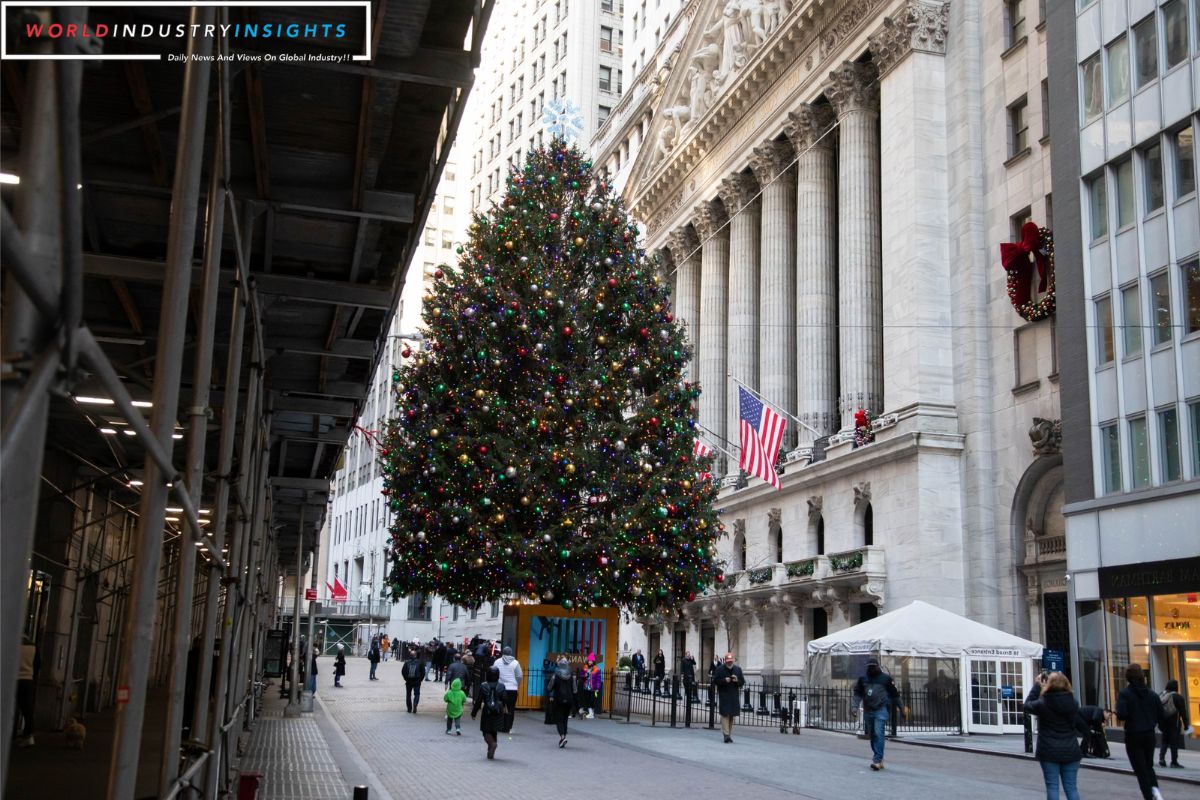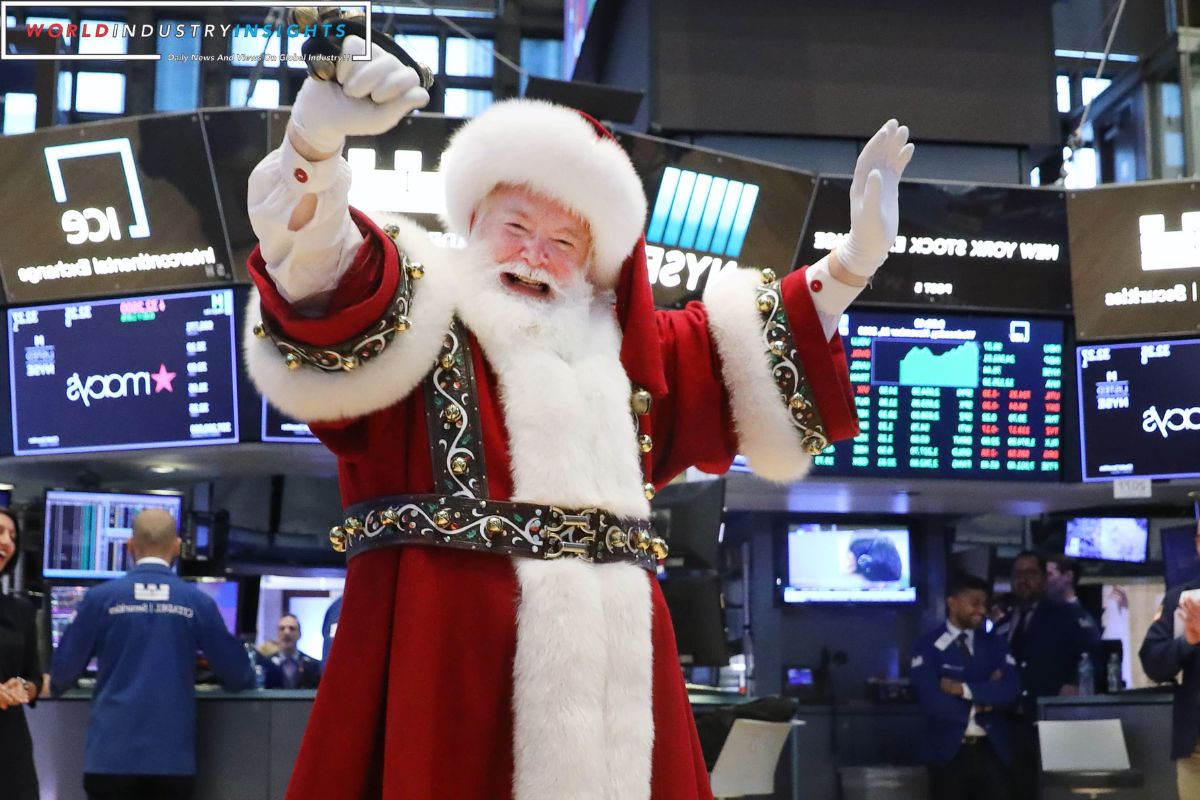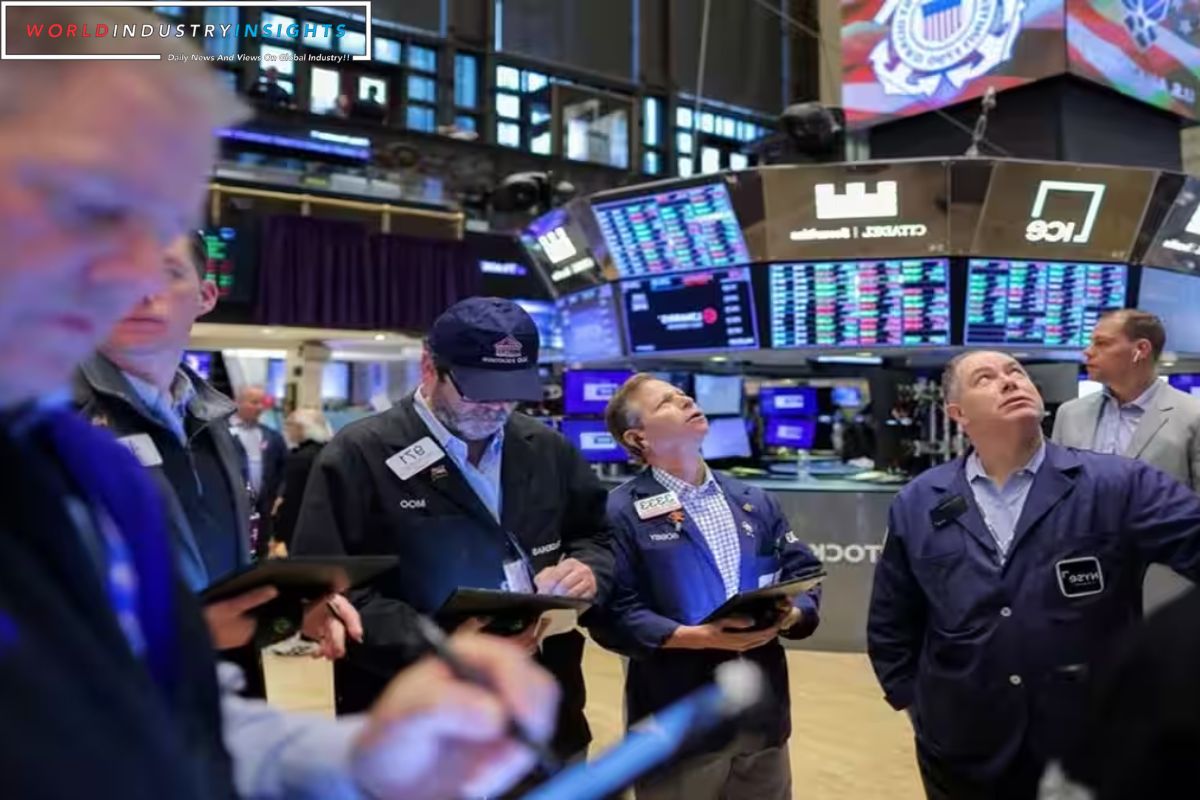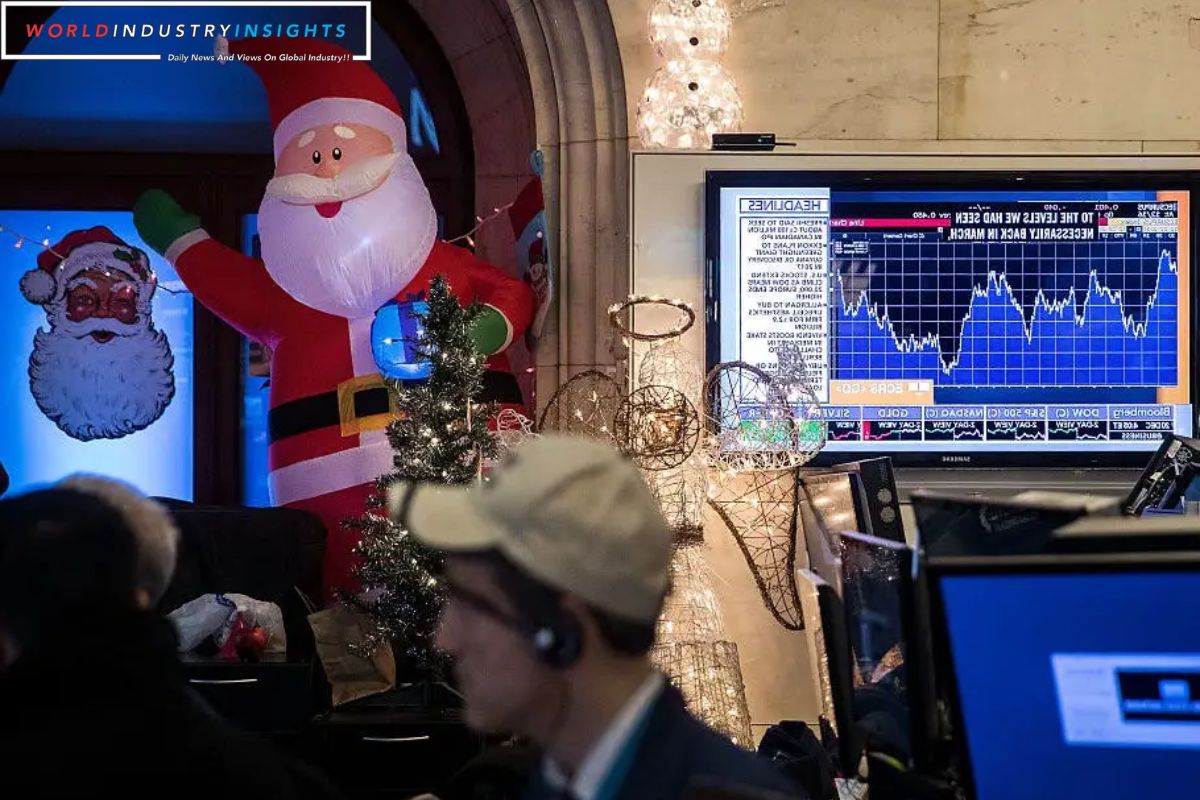US Stock Market: The combination of positive momentum, the Federal Reserve’s dovish pivot, and a shift in retail investor behavior may just be the recipe for a year-end surge.
As you analyze the current market conditions, it’s hard to ignore the fear of missing out (FOMO) trade that could further propel prices higher.
However, it’s important to approach this potential rally with caution, as there are complexities and concerns that could impact the market’s trajectory.
So, buckle up and prepare for what could be a jolly season for investors.
Key Takeaways
- The Santa Claus Rally is a historical trend that suggests a strong period for stocks at year-end, and the S&P 500 has already experienced a surge of 4% in December.
- The Federal Reserve’s dovish pivot and more accommodative stance have sparked optimism among investors, leading to a substantial net inflow of $6.4 billion in U.S. equities.
- There has been a significant shift from cash to equities, indicating a growing risk appetite among retail investors, driven by the Federal Reserve’s pivot and perception of a soft-landing scenario for the economy.
- The fear of missing out on potential gains and limited investment opportunities offering attractive returns are driving the current ‘Santa Rally’, but concerns exist about market sustainability, complacency, and potential headwinds.
Santa Claus Rally and Positive Momentum
You should believe in the holiday miracles of the Santa Claus Rally and its positive momentum in the US stock market.
As we approach the end of 2023, Wall Street is eagerly anticipating the rally to propel markets to record highs. The S&P 500 has already experienced a surge of 4% in December, contributing to a 24% increase for the year.
Also Read: US Stocks Soar to New Highs Amid Fed Drama and Economic Puzzle
This historical trend, known as the Santa Claus Rally, suggests a strong period for stocks at year-end. The rally is fueled by pre-new year purchases and holiday optimism, creating a positive momentum in the market.
Investors are encouraged to take advantage of this festive period and consider the potential gains that the Santa Claus Rally can bring.
Federal Reserve’s Dovish Pivot
The Federal Reserve’s dovish pivot is providing crucial support to market sentiment, with investors eagerly anticipating the potential impact on the US stock market’s ‘Santa Rally’. This unexpected announcement of a likely end to monetary policy tightening and projected rate cuts has sparked optimism among investors.
Here’s why the Federal Reserve’s dovish pivot is so significant:
- Moderating inflation: With November’s data showing a drop in annual U.S. inflation below 3%, the Federal Reserve’s decision to adopt a more accommodative stance is seen as a response to this moderation, which bodes well for the economy and the stock market.
- Investor appetite for stocks: Despite recent volatility, there’s been a substantial net inflow of $6.4 billion in U.S. equities, indicating a strong investor appetite for stocks. The Federal Reserve’s dovish pivot is likely to further fuel this appetite and drive the stock market higher.
- Market sentiment: The Federal Reserve’s shift towards a more dovish stance has boosted market sentiment, as it signals the central bank’s willingness to support the economy and financial markets. This increased confidence among investors could contribute to a positive ‘Santa Rally’ in the US stock market.
Retail Investor Shift and Risk Appetite
Investors have witnessed a significant 5% shift from cash to equities, indicating a growing risk appetite in the US stock market. This trend is driven by the Federal Reserve’s pivot towards a more accommodative stance and the perception of a soft-landing scenario for the economy. As the Fed continues to put pressure on yields, retail investors are seeking higher returns in riskier securities. However, caution is advised due to thin trading volumes and the potential vulnerability of the market to unexpected news or trades. To understand the magnitude of this shift, let’s take a look at the following table:
| Cash Allocation | Equity Allocation | |
|---|---|---|
| Before Shift | 60% | 40% |
| After Shift | 55% | 45% |
As shown in the table, there has been a noticeable decrease in cash allocation and an increase in equity allocation. This suggests that retail investors are becoming more willing to take on risk in pursuit of higher returns. However, it is important to carefully monitor the market conditions and stay informed to navigate potential pitfalls and make informed investment decisions.
Fear of Missing Out (FOMO) Trade
With retail investors increasingly shifting towards riskier securities, the fear of missing out on potential gains is driving the US stock market’s current ‘Santa Rally’. As investors see their peers benefiting from the market’s upward movement, they’re compelled to jump in and not miss out on the opportunity to make profits. This FOMO trade phenomenon is characterized by a sense of urgency and the fear of being left behind.
Here are three key factors contributing to the FOMO trade in the current market:
- Low interest rates: With interest rates at historic lows, investors are seeking higher returns in the stock market, fearing that they may miss out on the opportunity to earn better yields.
- Positive market sentiment: The optimism surrounding the market’s potential for record highs is fueling the fear of missing out. Investors don’t want to be on the sidelines while others are reaping the benefits.
- Lack of alternative investment options: With limited investment opportunities offering attractive returns, investors are driven to participate in the FOMO trade, believing that the stock market is their best bet for maximizing their gains.
As the fear of missing out continues to drive the market, it’s important for investors to carefully assess the risks and ensure their investment decisions align with their long-term goals and risk tolerance.
Complexities and US Stock Market Concerns
Amidst the US stock market’s ‘Santa Rally’, it’s crucial for you to navigate the complexities and concerns that come with it. While the holiday season brings a sense of optimism and potential gains, it is important to be aware of the challenges and risks that may arise. One concern is the narrowness of the market advance, indicating that only a few select stocks are driving the rally, which may not be sustainable in the long run.
Additionally, the decline in the VIX, often referred to as the “fear gauge,” raises questions about market complacency and the potential for a sudden reversal. Furthermore, uncertainties such as tax considerations and potential headwinds cannot be ignored. To help you grasp the complexities and concerns surrounding the Santa Rally, let’s take a closer look:
| Complexities | Concerns |
|---|---|
| Narrow market advance | Sustainability |
| VIX decline | Market complacency |
| Tax considerations | Potential headwinds |
| Uncertainties | |
Conclusion
You should believe in holiday miracles as the US stock market is on the brink of a Santa rally. With positive momentum, the Federal Reserve’s dovish pivot, a shift in retail investor behavior, and a fear of missing out trade, there are reasons to be optimistic.
However, it’s important to acknowledge the complexities and concerns surrounding the market. Keep an eye on these factors as you navigate the potential opportunities and risks in the coming months.
Our Reader’s Queries
Is it safe to invest in US stocks now?
Investing is generally considered safe, even during bear markets. However, there are certain situations where it may be risky. It’s recommended to keep your money in the market for a minimum of several years, if not decades, to maximize returns.
What are the 3 major stock market indexes in the US?
To keep tabs on market trends, investors often turn to various market indexes. In the United States, the three most widely used indexes for tracking stock performance are the Dow Jones Industrial Average (DJIA), S&P 500 Index, and Nasdaq Composite Index. By monitoring these indexes, investors can gain valuable insights into the overall health of the market.
Should we invest in US stock market?
Investing in US stocks not only provides exposure to American companies but also to top companies from various countries listed on the US stock market. This approach is an excellent way to diversify your funds across the world’s growing economies.
What is the YTD stock market return?
The YTD return refers to the profit or loss an investment has made since the beginning of the current calendar year. It’s a measure of how well an investment has performed over the course of the year so far. This figure is calculated by taking into account the investment’s gains and losses since the first trading day of the year. It’s an important metric for investors to keep track of, as it can help them make informed decisions about their investments.




